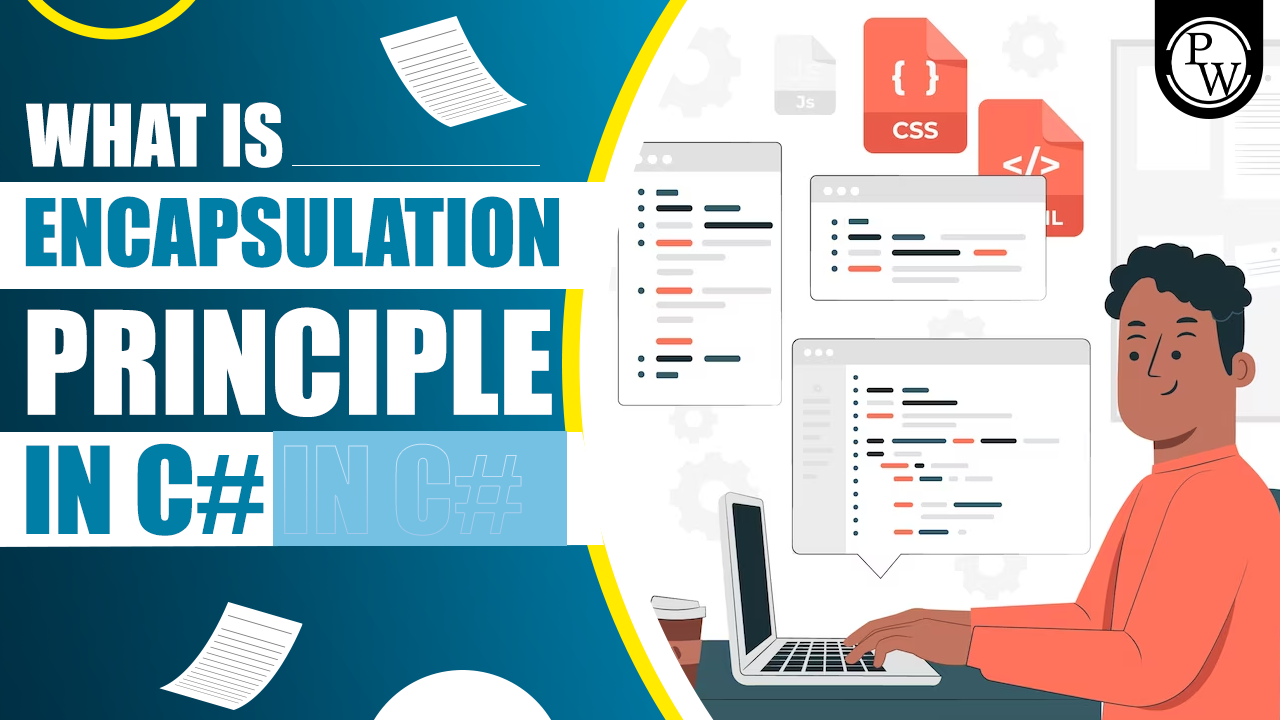Encapsulation in C# is the process of grouping or wrapping data variables and methods into a single unit, also known as a class. It ensures that the internal state of an object cannot be accessed directly by any other external members, class, structure, or interface. It can also be considered a protective shield that protects our data from unauthorized external access.
Encapsulation is one of the most essential principles of object-oriented programming and ensures the reliability and security of our program. Let us explore more about encapsulation in C# in detail.
Encapsulation in C# Overview
Encapsulation is an important process in OOPs. Let us check out some of the vital information related to encapsulation in C# with example.
- Encapsulation is a protective shield that prevents any unauthorized access to our program.
- In encapsulation, our data and methods are hidden, and only any member of the same class having access can access the function.
- We can achieve encapsulation by using private access specifiers in C#.
- Encapsulation in C# can be achieved using access specifiers such as private, public, protected, etc.
- Encapsulation is generally implemented using private access specifiers.
- Encapsulation ensures the reliability, security and maintainability of our program.
- Encapsulation is used to ensure security in major applications in the real world. It is used in the banking system to ensure the security of customer details, GUI Components, gaming applications, management systems, etc.
| Recommended Reads | |
| Java Vs C++ Vs Python | Java or C++ which is better |
| Linear Search in C | what are arrays in C? |
Implementation of Encapsulation in C#
In C#, we can achieve encapsulation using access specifiers. There are many access specifiers in C#, which help to implement encapsulation and decide the accessibility of class members. Let us check out the major access specifiers in C#
1. Public access specifier
This is an open specifier, and external members can access the methods and data without any need for permission. It is available for everyone who wants to access the code. It ensures the least security for our variables and functions.
2. Private access specifier
Private class specifiers can only be accessed by members of the same class who have permission or after the permission declaration. Private specifiers are often used in implementing encapsulation in C#.
3. Protected access specifier
External class members cannot access our data and methods. However, members of the inherited class, subclasses or classes in the same package can access the methods in protected class specifiers.
Consider the example below to understand the implementation of encapsulation in C# language.
| Encapsulation in C# |
| public class BankAccount
{ private double balance; public double Balance { get { return balance; } private set { if (value >= 0) balance = value; } } public void Deposit(double amount) { if (amount > 0) Balance += amount; } public void Withdraw(double amount) { if (amount > 0 && amount <= Balance) Balance -= amount; } } |
Advantage of Encapsulation in C#
Encapsulation plays a vital role in object-oriented programming. Let us find out some of the major advantages of encapsulation.
- Encapsulation helps to prevent any direct access to data without authorization. This helps to protect our data and maintain the data integrity.
- Its primary objective is to provide security to our application by limiting the access given to the users.
- We can reuse our code in different applications or projects easily, which helps to promote reusability and reduce redundancy in code.
- Encapsulation promotes code modularity as we combine many related data and methods together inside a class. It makes the development process easy as maintaining and modifying our code becomes easy with encapsulation in classes.
- It becomes easy to maintain and modify the code.
- As our program is well structured, maintaining and debugging our code becomes easy due to code reusability.
Recommended Reads
Data Science Interview Questions and Answers
Data Science Internship Programs
IIT Madras Data Science Course
Example of Encapsulation in C#
Let us check an example of encapsulation in C# in the table below.
| Encapsulation in C# |
| #include <iostream>
using namespace std; class EncapsulationExample { private: // we declare a as private to hide it from outside int number1;
public: // set() function to set the value of a void set(int input1) { number1 = input1; }
// get() function to return the value of a int get() { return number1; } }; // main function int main() { EncapsulationExample myInstance; myInstance.set(10); cout << myInstance.get() << endl; return 0; } |
Difference Between Encapsulation and Abstraction
Let us know some major differences between encapsulation and abstraction in object oriented programming.
| Difference between Encapsulation and Abstraction | |
| Encapsulation | Abstraction |
| Encapsulation is used to wrap data and methods into a single unit. | Abstraction is used to hide the internal details from the external members. |
| It helps to ensure reliability and security. | It helps to hide the complexity and present only the useful and essential features of an object. |
| It focus on hiding the sensitive data information from unauthorized access. | It focus on hiding the unwanted details and presenting only the essential features of an object. |
| It is implemented through access modifiers such as public, private, and protected. | It is implemented through abstract classes. |
| Encapsulation takes place at implementation level. | Abstraction take place at design level. |
| Objects which implements need to be abstracted | Object which implement abstraction are encapsulated. |
Also read: What is abstraction in C?
Ans: Encapsulation in C# is the process of grouping or wrapping data variables and methods into a single unit, also known as class. It ensures that the internal state of an object cannot be accessed directly by any other external members, class, structure, or interface. Ans: You can implement encapsulation in C# using access specifiers. Check out the article to know more about access specifiers in C#. Ans: Encapsulation in C# hides important variables and methods to ensure safety from any unauthorized access. It ensures our program's reliability, security, and maintainability. Ans: Encapsulation in C# is crucial as it ensures the reliability, security, and maintainability of our code. It prevents any unauthorized access and prevents any harm coming to our program. Encapsulation in C# FAQs
Q1. What is Encapsulation in C#?
Q2. How can we implement encapsulation in C#?
Q3. What is the use of encapsulation?
Q4. Why is encapsulation important in OOPs?




